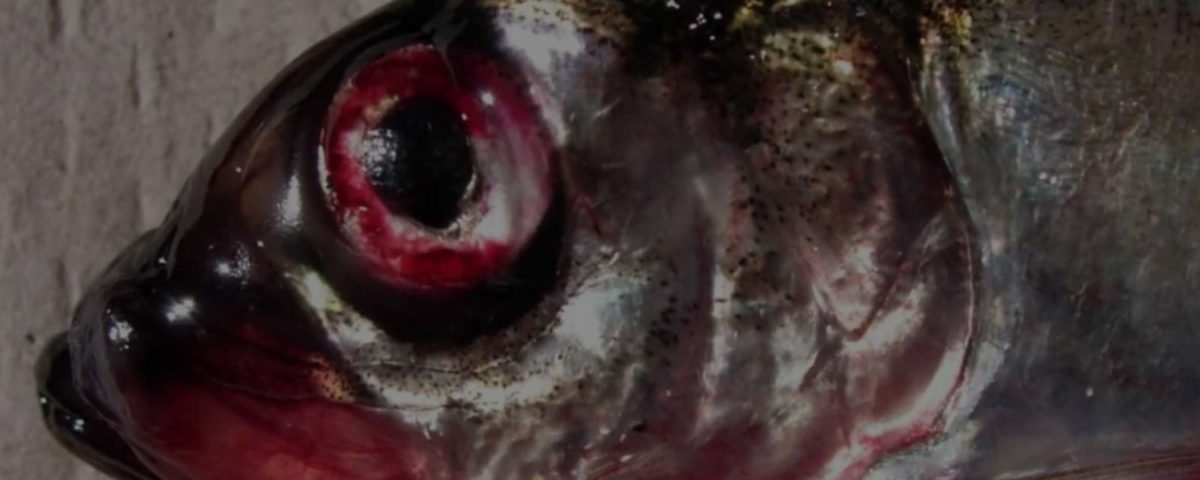Herring disease research

PROJECT
Herring Disease Research
Background
Infectious and parasitic diseases are suspected of limiting the recovery of Pacific herring in Prince William Sound (PWS). They are also likely to be the cause of rapid declines in the herring population as diseases have been associated with massive fish kills in herring and other forage fish. We are exploring the prevalence and intensity of diseases and how they are transmitted in PWS herring. Of particular interest are viral hemorrhagic septicemia virus (VHSV), viral erythrocytic necrosis (VEN) and Ichthyophonus parasite.
Viral hemmorhagic septicemia
VHS is extremely harmful to herring, often causing mortality within several days of exposure to the virus. Herring undergoing active VHS disease are often lethargic and demonstrate external hemorrhages around the eyes, mouth, and fins. Herring are highly susceptible to VHS; however, the fraction of individuals that survive the disease develop long-term resistance to subsequent disease outbreaks.
Viral erythrocytic necrosis
VEN is a condition that affects the red blood cells of many species of fish including herring. Exposure to the virus results in anemia, or a lack of red blood cells. This affects their level of energy and overall stamina, predisposing them to other infections or increasing the impact of other stressors.
Ichthyophonus
Ichthyophonus is a single-celled parasite that has caused massive disease outbreaks in Atlantic herring populations and currently occurs in high prevalence among Pacific herring. Ichthyophonus can kill herring directly or cause chronic infections that result in fish with decreased condition, decrease swimming performance, and decreased ability to avoid predators. It has been shown that the prevalence of the parasite increases with age of the herring.
Methods
Through field studies, we hope to better understand the prevalence of disease and infections in PWS herring, as well as in Sitka and Puget Sound. Lab studies will shed light on the relationships between the host, pathogens, and environmental conditions. For example, can pre-exposure to VHS help anticipate future disease outbreaks? Does change in water temperature change the virulence, or harmfulness, of the pathogens? In particular, we will evaluate the ‘bioenergetics disease hypothesis’. This hypothesis suggests that changing climatic conditions that promote bacterial production over planktonic production in the summer and fall. The decrease in plankton quality and quantity available to age-0 herring in the fall leads to decreased fitness in the spring and increased susceptibility to VHS, VEN and Ichthyophoniasis.
What we are learning
Despite complications due to COVID-19, we were able to collect the majority of herring health surveillance samples during the spring of 2020. Overall Ichthyophonus infection prevalence in herring was 17% in PWS and 22% in Sitka Sound and VHSV was not detected in any samples from PWS or Sitka Sound. Serological surveillances indicated that the prevalence of herring with detectable levels of neutralizing VHSV neutralizing antibodies in 2019 and 2020 (1-2%) were the lowest since surveys began in 2012. This low antibody prevalence corresponded with the strongest recruitment event in PWS since the 1999 year class recruited in 2002 and 2003. Combined, these observations support the hypothesis that lack of VHSV exposure to subadult stages of the 2016 year class may have facilitated their strong recruitment into the adult population in 2019 and 2020. These findings are now being incorporated into the modeling team’s simulations to test whether it is possible to use antibody data to estimate VHSV related mortality.
PRINCIPAL INVESTIGATOR
Paul HershbergerUS Geological Survey
phershberger@usgs.gov
Maureen Purcell
US Geological Survey
mpurcell@usgs.gov
Maya Groner
PWS Science Center mgroner@pwssc.org
RESEARCH PERIOD
2009-2022FUNDING
Exxon Valdez Oil SpillTrustee Council
Publications
Final ReportMEDIA
Field Notes: Herring diseaseField Notes: VHS in Herring




